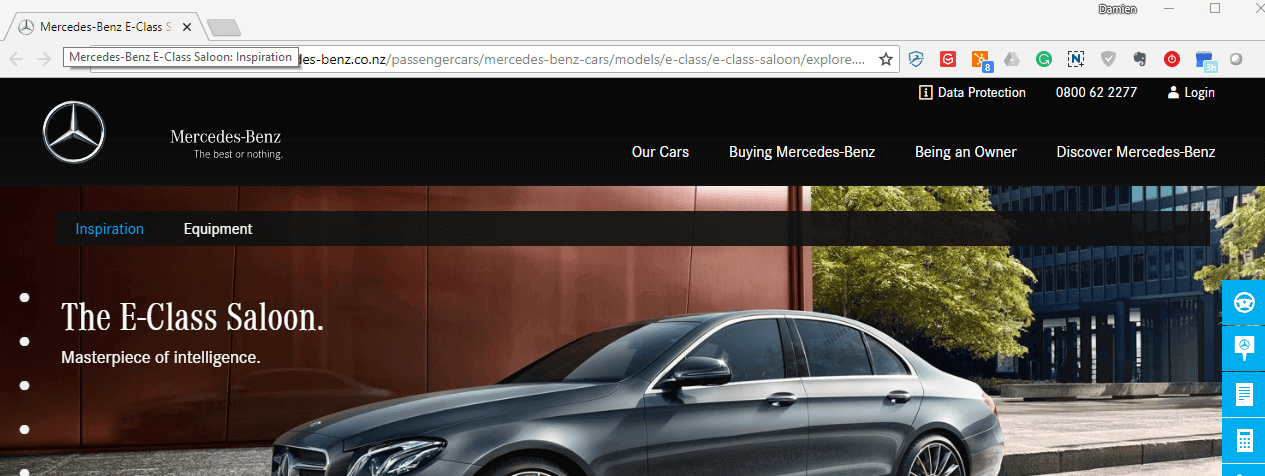What Is Search Engine Friendly Website Design?

Search engine friendly website design means designing your website according to Google’s guidelines. This helps Google understand what your website is about, it ensures Google can find all the pages, and it helps improve your ranking on search results pages.
A good website developer and/or SEO agency in Auckland will look after all the elements below on your behalf. However, it is good to have an overview of the topic, so you can ensure you get a fully optimised search engine friendly website.
Here’s how you make your website search engine friendly.
Make Sure Google Can Easily Index Your Most Important Content
Website developers can add content to your pages in lots of different ways. This includes using HTML, the standard tagging system for most websites on the internet. It can also include other code such as Java or Flash as well as other types of content including images, video, and audio.
Search engines understand and use HTML more than any other type of content, however. Therefore, the most important content on your pages should be in HTML.
This means, for example, transcribing audio and video content into text. You should also use image alt tags for the images you include on your website. Image alt tags let you describe the image, so Google understands what it is.
Image alt tags look like this:
<img src=”YourImage.jpg” alt=”Description of the image”>
The Importance of Keywords
Keywords are crucial to SEO, so they are crucial to building a search engine friendly website too. Therefore, you should ensure you include the main keywords you want to target on the main pages of your website.
You should include keywords in the following locations:
- Page titles
- Page URLs
- In H1 headers
- In the first paragraph of a page, ideally the first sentence
- A couple of times in the text on the page
- In the image alt text of at least one image on the page
- In the page’s meta description
You should also include variations of the keyword too. For example, if your keyword is “how to train your dog”, a variation of that could be “learning to train your dog”.
When structuring your website, there are two important things to avoid in relation to keywords:
- Don’t keyword stuff – this means adding keywords to the page multiple times in the hope it convinces Google your page really, really, really, really, is the best. This simply doesn’t work and can actually lower your ranking in search. Keywords should appear naturally and strategically on your website pages.
- Don’t cannibalise keywords – this means using a single keyword as the target keyword on multiple pages of your website. For example, having three pages on your website targeting the keyword “how to train your dog”. Doing this simply spreads the value of your content across three pages, rather than directing that value to one page.
Optimising Page Titles
Google uses page titles as a ranking factor, plus they appear in a number of important places. This includes on search results pages:

Web browsers also use page titles on tabs:

Follow these tips to optimise page titles for SEO:
- Ensure your page titles are 70 characters or less. If you make them longer, Google will snip them on its search results pages.
- Write readable and meaningful page titles that are useful to users. Remember, one of the objectives of page titles is to encourage users to click.
- Make sure you include the main target keyword in the page title, ideally at the start.
- Include your company/website name at the end of the page title.
Optimising URLs
Many websites use page titles to create the URL for the page. Therefore, following the SEO guidelines for page titles will ensure you optimise URLs too.
There is one additional point to consider, however. Research shows short URLs are more likely to rank higher than long URLs. For your most important keywords, therefore, you should look at shortening the URL.
So, for example, you could shorten this URL:
YourWebsite.com/blog/how-to-train-a-dog
To this:
YourWebsite.com/how-to-train-a-dog
Optimising Content
Optimising the content on your website will also make it more search engine friendly. Here are the main tips:
- Make sure the content is well-written with no spelling or grammatical mistakes.
- Write and present the content so it is easy to read. This means using short sentences, short paragraphs, bullet-point lists, sub-headings, and everyday language.
- Include keywords in the content following the tips above.
- Ensure the content is unique.
- Make the content useful and engaging for readers.
Ensure There is a Link to Every Page You Want Google To See
Google follows all the links on your website to discover all its pages. This includes your menus, for example. There are often occasions when there are pages you want Google to index, but which Google doesn’t know about because it can’t find a link.
Here are some examples of when this situation might occur:
- Pages that only display after a user completes a form. Google doesn’t complete forms when crawling your website, so will not find these pages.
- Links in JavaScript, Flash, or Java.
- Links blocked by your robots.txt file or Meta Robots tag. These two tools perform the same function – they let you tell Google’s crawler which pages on your website you want them to ignore. It is easy to make a mistake when doing this, however, accidentally restricting Google’s access to pages you want it to find.
- Pages only accessible using a search tool. As with forms, Google’s crawler does not use search boxes on your website.
- Pages that are linked by a link-stuffed page. Google’s crawler only follows a limited number of links on a page. Therefore, if the only link to a page on your website is from another page that is stuffed with links, Google might not find it.
Duplicate Versions of Content
Google does not like duplicate content, i.e. content that appears in multiple locations on the internet. This can be on different websites, but it also doesn’t like duplicate content on a single website either.
The problem is there are many legitimate reasons for having duplicate content on your website. For example, having a print-friendly version of a page.
There is a solution to this, though – the canonical tag, which you should add to all duplicate pages. The purpose of this tag is to tell Google there is a master copy of the page.
The canonical tag looks like this:
<link rel=”canonical” href=”URL”/> where URL is the website address of the master page.
Meta Description
The importance of meta descriptions to SEO is disputed. That said, Google does use meta descriptions on its search results pages:

So, even if Google doesn’t use meta descriptions as a ranking factor, they are important as they encourage users to click the link to your website.
Here’s how you can optimise meta descriptions:
- Make sure they are no longer than 120 characters. Google clips meta descriptions that are longer than this.
- Create unique meta descriptions for each page on your website
- Ensure your meta descriptions are readable and meaningful
- Include the main keyword of the page in the meta description, ideally at the start
Laying the Foundations
Creating a website that is search engine friendly is the starting point for any effective SEO strategy. Once you have the above in place, you can move onto more advanced SEO techniques, but it is important to have the right foundation in place first.


Comments are closed.